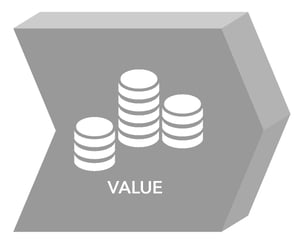There are several factors that can be used, but only a handful of them have the academic community’s nod. For us, the four relevant factors that cover the whole factor-investing universe are: value, low risk, momentum and quality. And here’s why.
Some say it is an investment style some think of them as mere ingredients to have in the portfolio and then there are others who are completely unaware. However, factor investing, at its core, is a strategy—a strategy that has been developing over time. Yes, there is history and chronology involved. The seeds were sown in the 1960s, when the capital asset pricing model (CAPM) was first introduced. Today, at first glance the factors seem to be in abundance. But then, all that is out there isn’t gold. For instance, the S&P follows 17 factors. Many of these are, however, overlapping. Take for example ‘high-dividend yield’. This factor could be covered in-between value and quality. As such, they are best distilled into five core factors.
So, to demystify the space, we decided to list the four factors that we believe in and here is why:
1. First came low risk

While most rules of investing begin with a lesson to higher your earnings, the first rule of factor investing is to lower your risks. The idea behind low-risk or low-volatility stocks is to capture the excess returns of the stocks with lower than average volatility, beta, and/or the idiosyncratic risk.
In the long term, low risk stocks offer a better risk-adjusted return than higher risk stocks. The Scientific Beta meter that Evli uses for low risk is the realised volatility of the equity during the preceding 24 months, that is, the standard deviation of the annual return.
2. Then came value
The second factor to be introduced in 1977 was value, suggesting that inexpensive stocks should outperform more expensive ones. However, value investing is an old concept. Benjamin Graham had been urging investors to buy stocks at a discount to their intrinsic value since the 1930s. Graham believed that expensive stocks leave little room for error versus the upside promised by cheap stocks— a concept backed by most successful investors, including Warren Buffet.
The basic logic behind value investing is that investors tend to be overly optimistic about expensive, high-growth stocks and overly pessimistic about cheap, slower-growth stocks. So, these cheap stocks outperform when the markets are optimistic. Empirical evidence seems to support this conclusion. Results indicate that value investing can generate excess returns over time.
3. And then came momentum

Momentum is what technical analysts have been doing for decades—following price trends to predict the future, timing the markets to catch a trend on time and earn profits. In 1993, Narasimhan Jegadeesh and Sheridan Titman first provided empirical evidence on this concept, that stocks that outperform in the recent past will perform well in the future too, while the laggards will continue to lag. The most common measure of momentum is performance in the preceding 12 months, with the return of the last month deducted.
One may ask how momentum works, if everyone knows about the market movements? Behavioural science argues that investors usually underreact to improving fundamentals of a stock or trends. In fact, it’s not until a stock is outperforming that it catches peoples’ attention. And then they tend to pile onto the trade. This allows early birds (if you are one) to catch the worm on time and ride the tide.
4. And finally came quality 
Who doesn’t want quality investments in their portfolio? However, this was one of the last factors to be acknowledged. This could be due to the lack of consensus on how to best define “quality.” The concept is ambiguous. However, we use two criteria to define a high-quality company—one, high profitability and two, low investments.
High profitability may seem obvious, but it appears that investors often tend to miss this basic hygiene check, especially in case of growth stocks. Low investment says that investors tend to over-estimate the profitability of a company’s investment. Making any of these mistakes can land you with lemons.
5. The implicit factor: Size
Remember we said at the beginning that there are five factors that work? The fifth factor is size. The concept is based on the number one rule of investing in equities—the higher the risks, the bigger the returns. Small-caps tailor fit this definition. The idea is that although smaller companies are typically more volatile and have a higher risk, they also give you a premium return that compensates for the higher risk taken.
However, in case of Evli, size is inbuilt in the strategy itself as we weight all stocks within factors equally. Thereby, stock weights vary only depending on how many factors they belong in. This means that largest stocks are, by design, under-weighed, and the portfolio has a much larger proportion of medium-sized companies than the market index. This also means better diversification and inherently saves you from betting on large expensive stocks.
Interested in further reading? Read the article Making sense of factor investing

